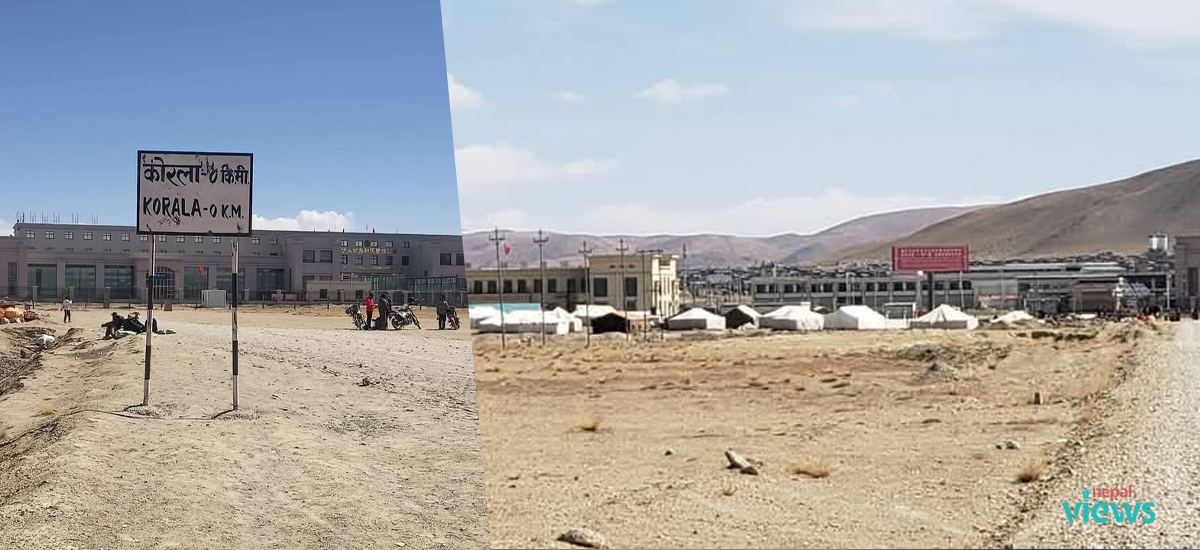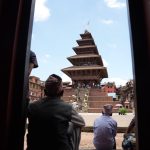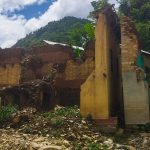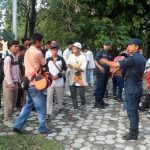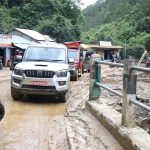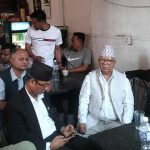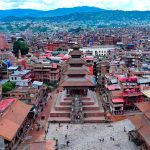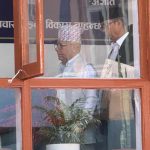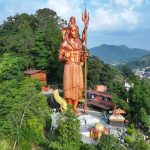On October 30 last year, some “people from Kathmandu” reached Korala, a strategic border point between Nepal and China. One of them was Home Minister Ramesh Lekhak, who inaugurated the immigration office and returned to Kathmandu.
People from Korala refer to Nepal’s politicians, rulers, and administrators as “the people from Kathmandu.” The official inauguration of the immigration office was a step toward operationalizing the strategic border point.
It has been over six months since the inauguration, but there is still no clarity on how to systematically operate the border point.
Though China officially began using the Korala border in November 2023, Nepal has sorely lagged behind.
The prefabricated building with ten small rooms, inaugurated by Minister Lekhak, has remained closed since the very next day. There is no staff, nor is the building in a condition fit for occupancy.
Korala is a plateau situated at an altitude of 4,597 meters. There were no traditional settlements on either side of the border. The nearest settlement on the Nepali side is Nechung, located about 14 kilometers south, across an endless, flat Himalayan plateau.
The Nepal Electricity Authority has extended power lines to the settlement, but electricity supply has yet to begin. There is also no drinking water facility.
Even on regular summer days, temperatures in Korala can drop below four degrees Celsius. Though it’s often sunny, the wind, particularly between 10am and noon, remains bitterly cold. And in winter, temperatures drop to as low as -15 degrees Celsius.
From Korala, the Dhaulagiri, Nilgiri, and Annapurna mountains to the south appear smaller—almost dwarfed. The surrounding hills remain snow-covered year-round.
Nepal has yet to formulate a plan to build habitable infrastructure in Korala. Moreover, it must address the strategic importance of the area.
Meanwhile, China has already developed all the necessary infrastructure for a well-managed, modern border crossing within just two and a half years. It has built facilities for immigration, customs, quarantine, parking, and security checks.
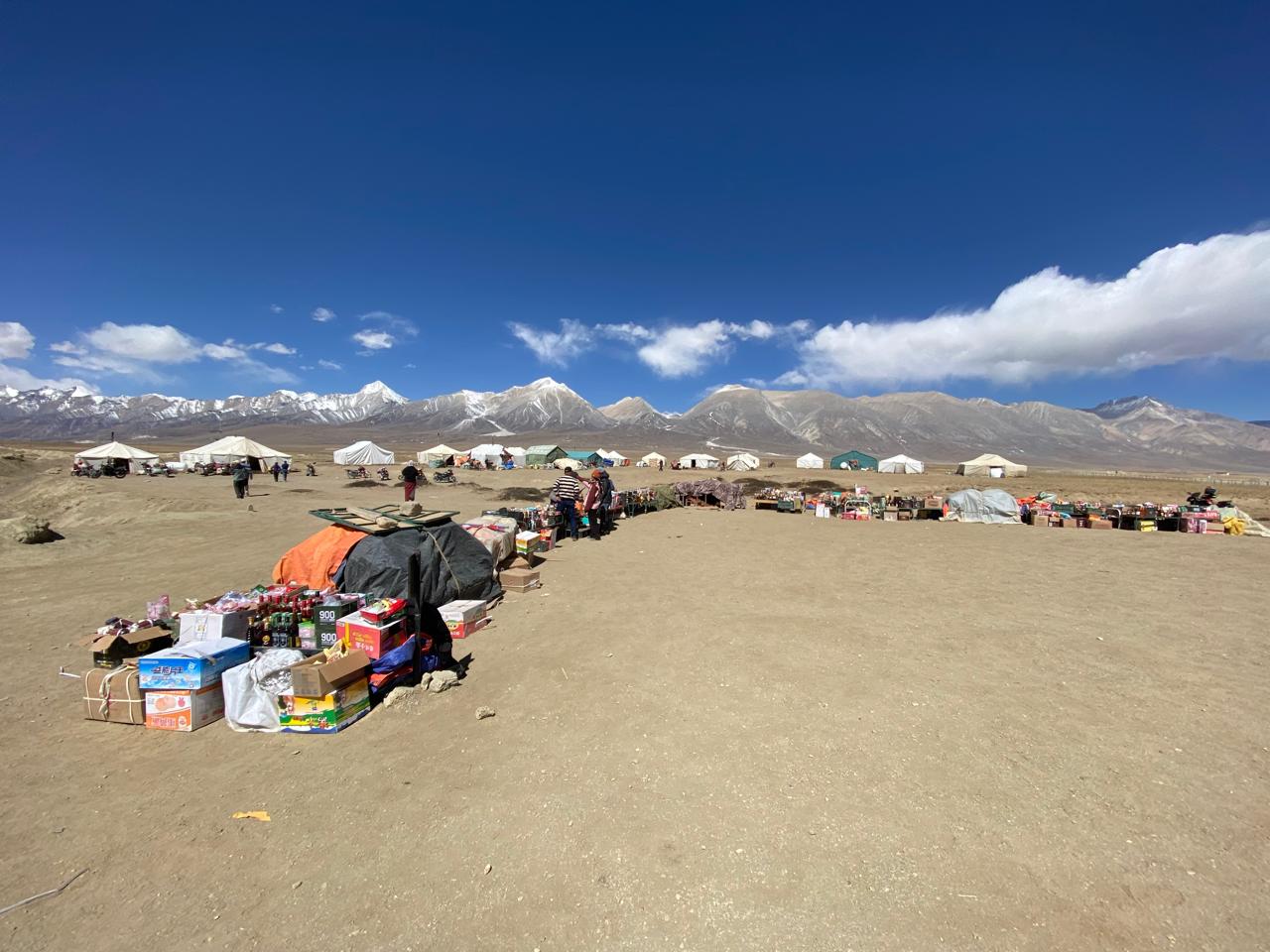
In addition, China has also constructed grand commercial complexes. It looks as though a new city has sprung up on the Chinese side.
The contrast between the grandeur on the Chinese side and the neglect on the Nepali side is a stark reminder of the capacity gap between a strong and a weak nation. Comparing both sides of Korala leaves Nepalis with a sense of dismay.
During Prime Minister KP Sharma Oli’s last visit to Beijing, an agreement was signed for China to help build infrastructure on the Nepali side. But implementation is nowhere in sight.
A 25-kilometer track from Lomanthang, considered the capital of Upper Mustang, to Korala has been opened and graveled, though it has yet to be blacktopped.
The prefabricated building designated as the immigration office on the Nepali side has never reopened since its inauguration. At the Nechung Customs Office, located 14 kilometers south, there is no officer-in-charge, nor any record of transactions.
In Nechung, checkposts of the Armed Police Force and Nepal Police are headed by ASI-level officers. These posts are responsible for overseeing the Korala border, reflecting how little priority Nepal gives to this point.
Mustang is one of the top routes for foreign tourists in Nepal. The entire district falls under the Annapurna Conservation Area Project (ACAP), managed by the National Trust for Nature Conservation. However, government offices in the district are largely ineffective.
There is growing public dissatisfaction that ACAP, established in 1987, has failed to fulfill its original mandate.
“ACAP is as good as dead,” says Gyalcho Bisht, a traditional healer from Lomanthang.
To trek in Mustang, each foreign tourist must pay $500 to the Nepal government and an additional Rs 3,000 to ACAP for a 10-day permit.
Hoteliers and tourist guides say these fees are too high. They argue that the dual charges limit tourist numbers and reduce their spending capacity.
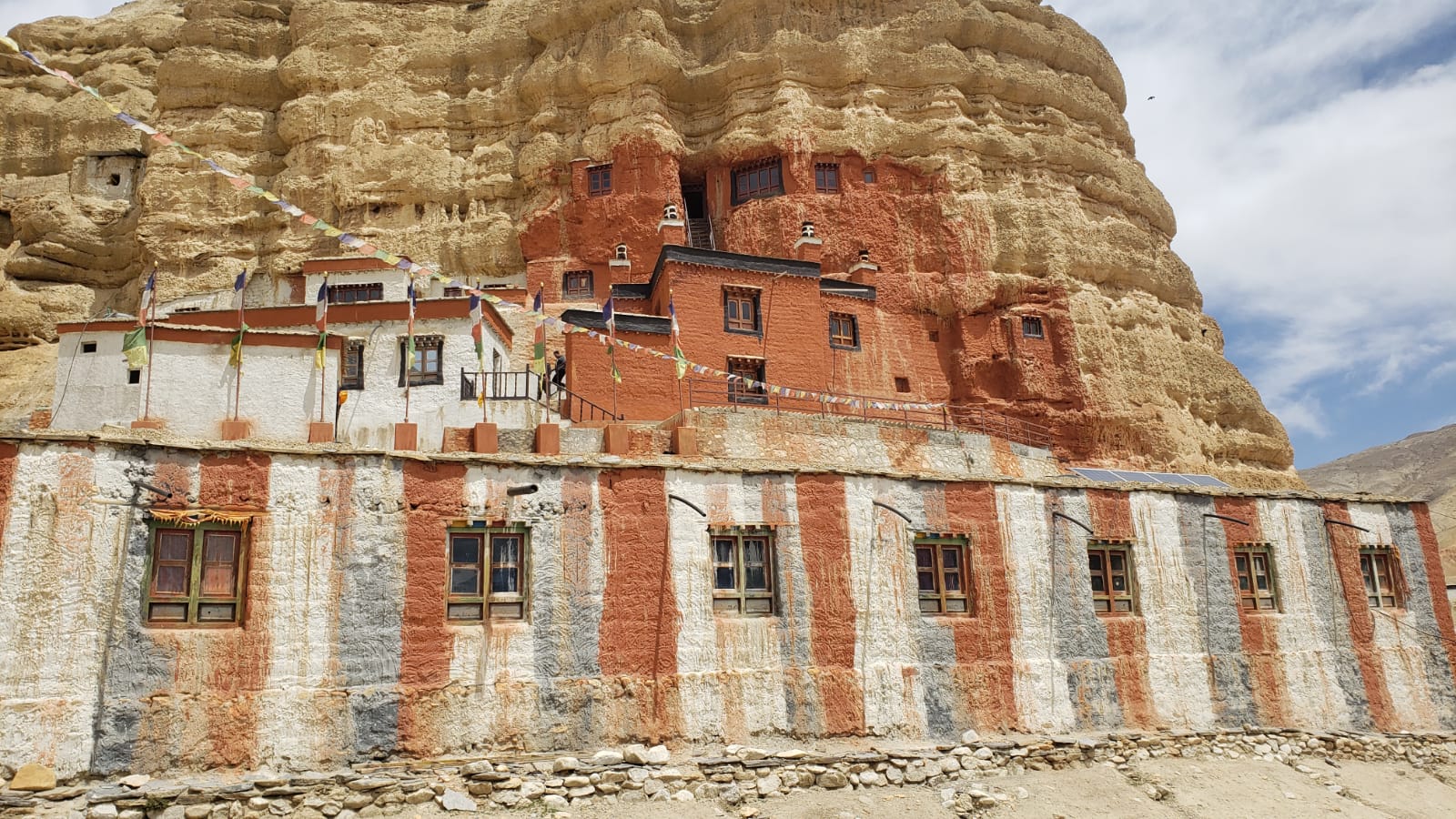
However, foreign tourists are not allowed to reach Korala. Only Nepali citizens are permitted. Tourists have to return from Chhoser, located 15 kilometers below Korala.
Chhoser is home to unique caves and monasteries, including Lo Gharpu, Lo Nifu, Chenpa, and Sija Jong — all major attractions.
Still, foreign tourists must give up the hope of going higher. The reason: China disapproves of foreign visitors reaching Korala from the Nepali side, citing concerns over Tibet’s security.
This is the area that once served as the final base for Khampa rebels. Khampa leader Wangdi fled from the Kaisang camp, crossed the Karnali via Upper Dolpa, and was killed in Darchula.
The older generation here still vividly recalls the Khampa rebellion. They claim over 3,000 Khampa fighters had once stayed in and around Lomanthang before being disarmed by the Nepali Army.
More than five decades have passed since the rebellion was suppressed, yet China’s fear remains fresh.
Opening a border should mean facilitating trade and people’s movement. But with foreign tourists barred from even reaching the border, Korala cannot function as a viable trade route. Even Nepalis face restrictions in crossing into China.
Currently, only Nepali citizens from Mustang district are allowed to cross Korala — and only to a limited area and during limited hours.
These locals sustain the small-scale trade at the border. Around 15 tents are set up on the Nepali side. The Jomsom District Administration issues a special ID card to Mustang residents, which the Chinese immigration office validates with a sticker.
With this, they can cross the border between 9 a.m. and 5 pm., mainly to buy items like biscuits, noodles, chocolates, tea, coffee, and alcohol, which they then sell from tents to Nepali visitors.
The number of Nepalis visiting Korala is increasing. Those visiting Muktinath often try to reach Korala too, though the road above Kagbeni is not in good shape.
There is no currency exchange facility at the border. To convert Nepali rupees into Chinese yuan, one must travel down to Pokhara.
Still, Chinese traders in Korala readily accept Nepali currency. Dawa Futi Lowa, a trader operating from a tent for about a year, says: “There’s no problem with money. Both currencies work. Our 20 rupees equals one of theirs. Even then, their alcohol is cheaper than ours.”
Customers agree. Branded liquor that costs up to Rs 5,000 in Nepal is available for just Rs 3,000 across the border.
Despite the yuan being 20 times stronger than the Nepali rupee, Chinese goods are cheaper.
China imposes no export duty, and Nepal hasn’t started collecting customs either. A constable at the Nechung checkpost says, “There haven’t been large imports — just small household goods. So, the absence of customs hasn’t been an issue yet.”
Nepali visitors to Korala often take photos at border pillar number 24. They gaze at the grand Chinese infrastructure in awe, express frustration over Nepal’s lack of development, curse the politicians in Kathmandu, and return with some Chinese goods as souvenirs.
The peak visiting hours are between 8a.m and noon. After that, strong winds and the risk of altitude sickness set in.
Some start feeling altitude sickness as early as Lomanthang, which sits at 3,900 meters above sea level.
Before Korala became a border point, Nepali herders used to graze sheep, mountain goats, and yaks on the plateau. The area is also known for musk deer.
The locals of Lomanthang and nearby villages refer to themselves as “Lowa.” They resemble Sherpas in appearance — wearing bakkhu and speaking Tibetan — but they don’t accept the Sherpa label.
Another girl in her late teens, running her business from one of the tents, said that the language they speak is almost the same as the one spoken on the other side of the border. “There may be minor differences, but we can easily understand each other,” she said.
“Lowa” is a branch of Tibetan origin, whose first king, Ame Pal, established the kingdom of Lo Manthang in 1380, with borders extending east to Chhonhnumri, west to Horkot, and south to Tatopani in Myagdi. Jigme Dorje Palbar Bista was the 23rd generation and the last king of this lineage.
In the tent-trading business of Korala, the young men and women of “Lowa” almost have a monopoly. It’s not unusual that people from other castes and communities do not dare to engage in Korala’s early-stage trade, enduring the cold and barren plateaus with no facilities. Even for older locals, living in Korala isn’t easy.
Most of the young people involved in the tent business in Korala have dropped out of their studies after completing their “Plus Two” in Pokhara. Their common argument: “Even though it’s hard now, we came into this trade in Korala hoping that there might be a better future.” “What will the people from Kathmandu do?” they wonder.
Without the support and goodwill of these “people from Kathmandu,” their trade is unlikely to flourish or be secured.
No one owns private land on the Korala plateau. What kind of land use policy the government will adopt will largely determine the nature of the infrastructure to be built here, and the role of local residents and the private sector.
As power lines have already been installed, electricity may soon start flowing. However, without resolving the issues of drinking water and land ownership, settling in Korala won’t be easy. The road has already reached; only blacktopping remains.
Looking at its topography and its commercial and tourism potential, it seems appropriate for the government to undertake the planned development of a well-organized Himalayan town in Korala. How China managed to do this in such a short time — or is currently doing so — could offer lessons Nepal can learn from.
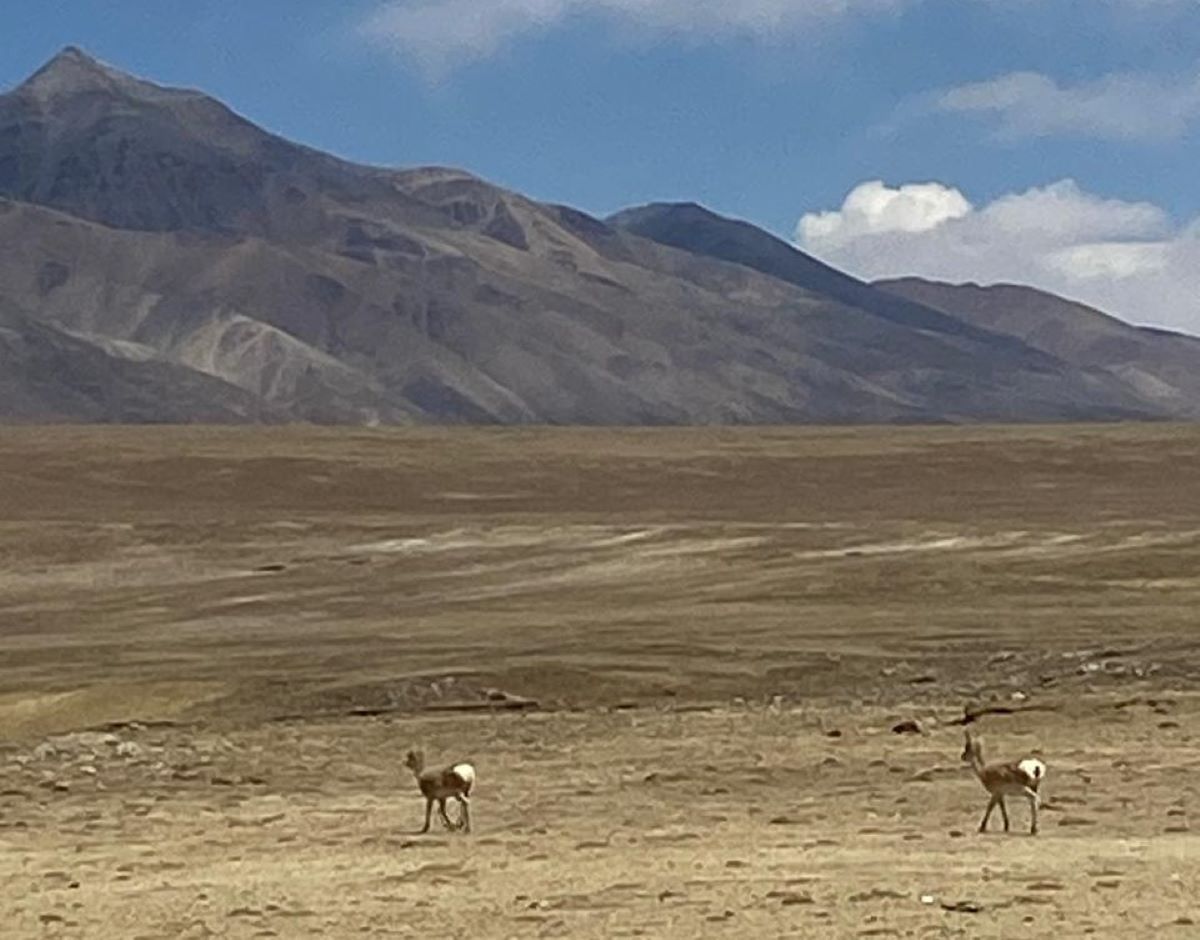
However, this task won’t be easy without reassuring China regarding its “Tibet sensitivity” and “strategic concerns.”
If an integrated development plan is made for the surrounding areas such as Lomanthang, Chhoser, Thinkar, Nechung, and Korala, it could make a significant contribution to Nepal’s tourism and trade in the future.
The residents of Lomanthang have both hope and doubt toward the “people from Kathmandu.” But whether those “people from Kathmandu” will dispel their doubts and fulfill their hopes remains uncertain.
Nepali version of the story


